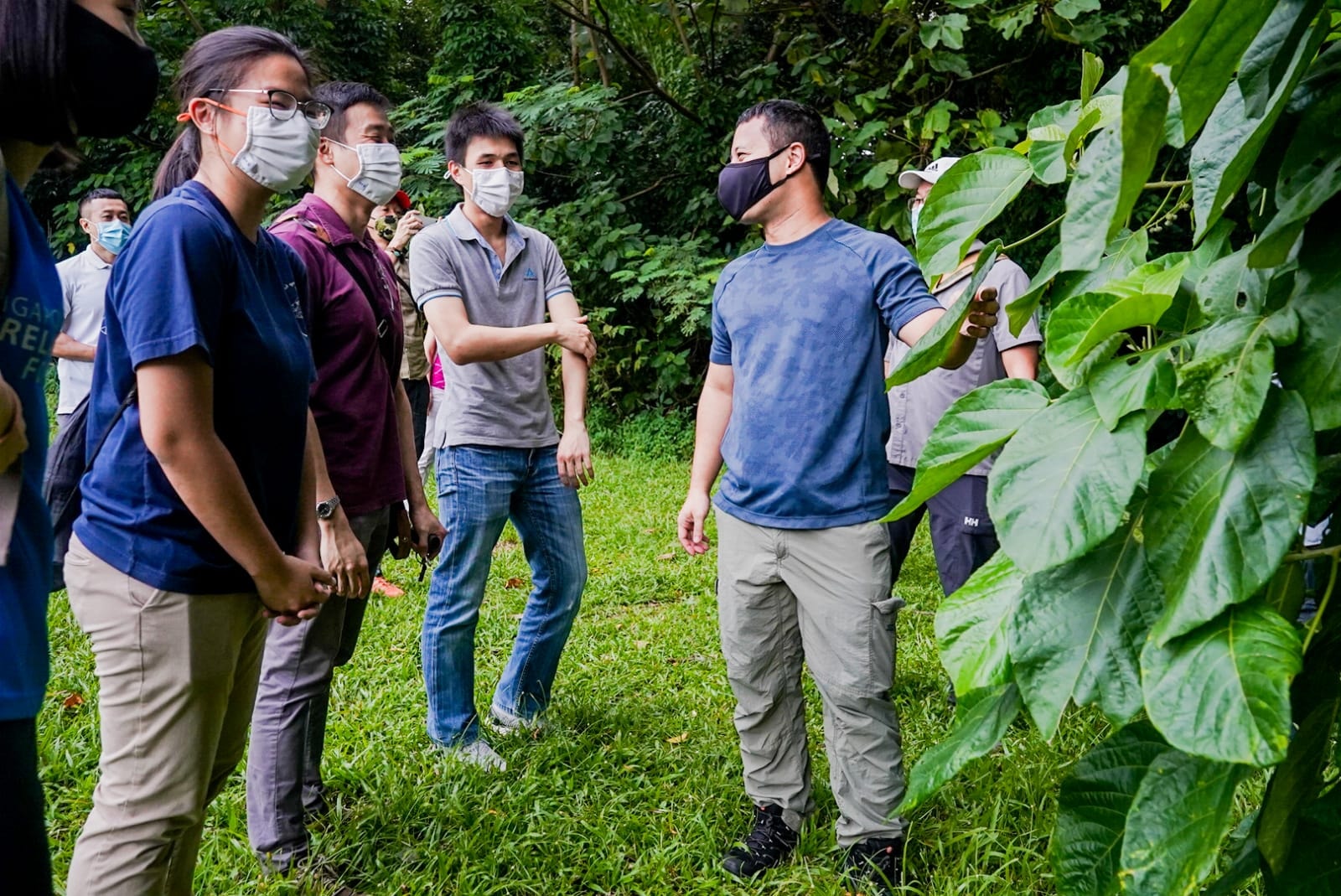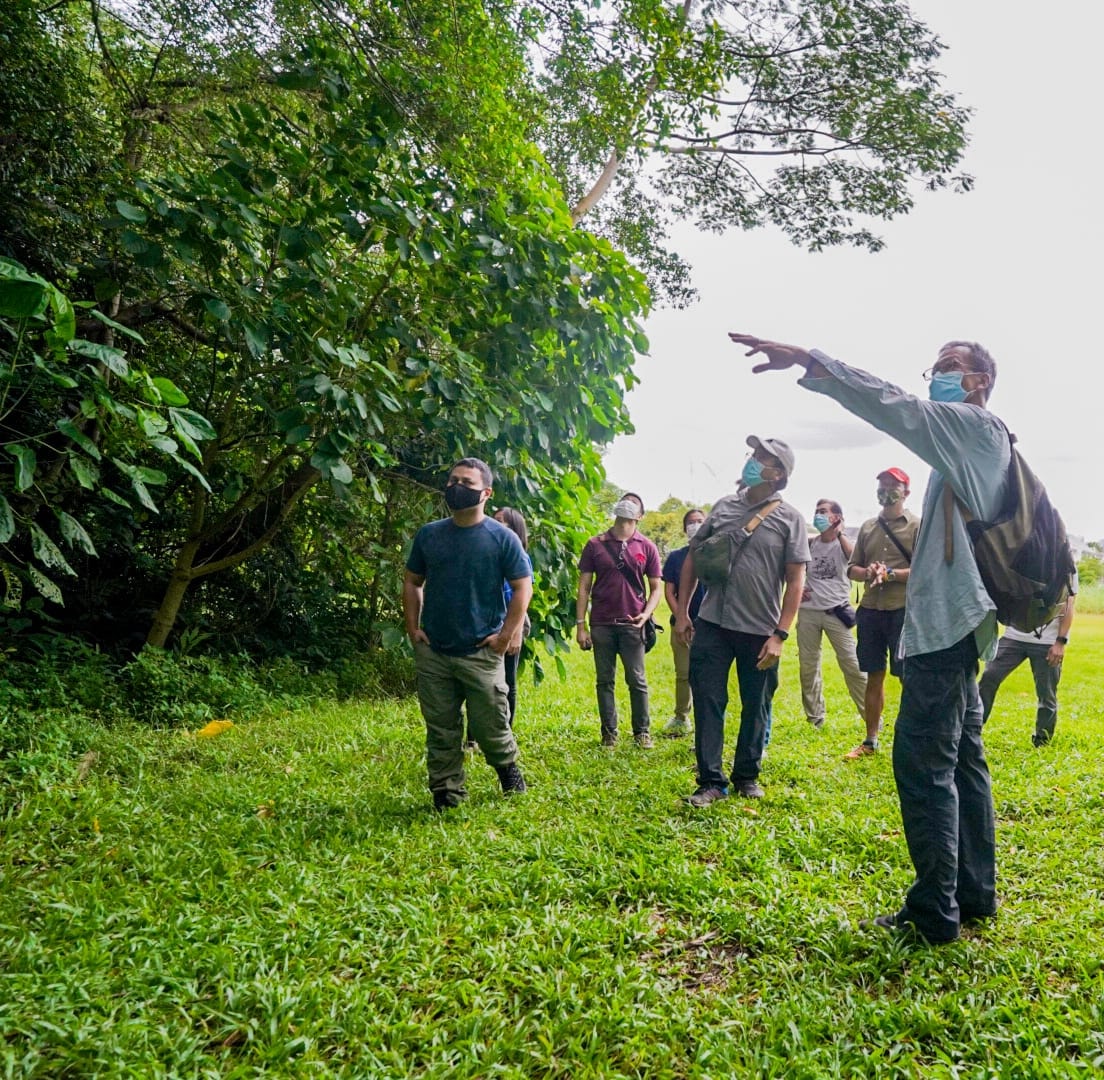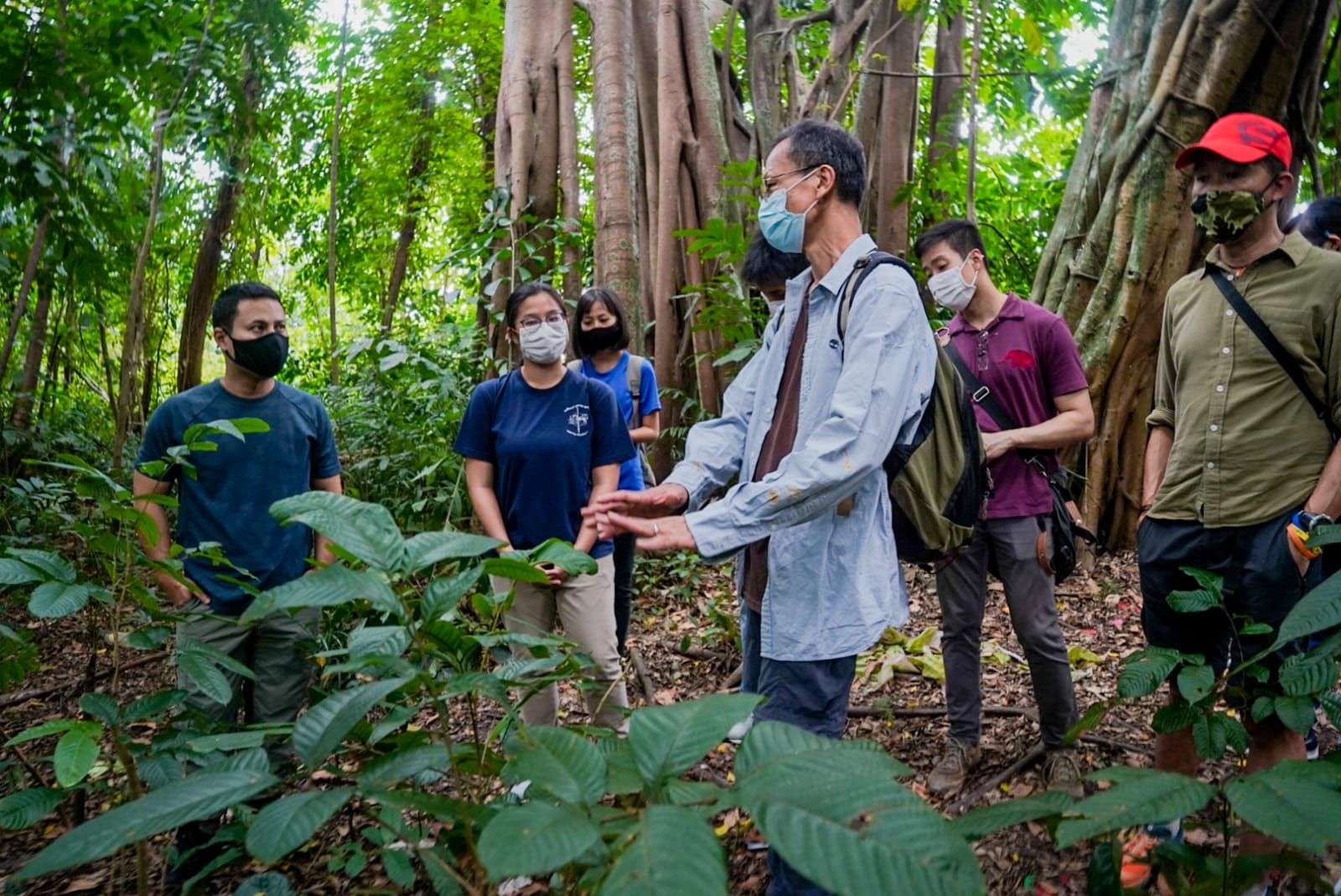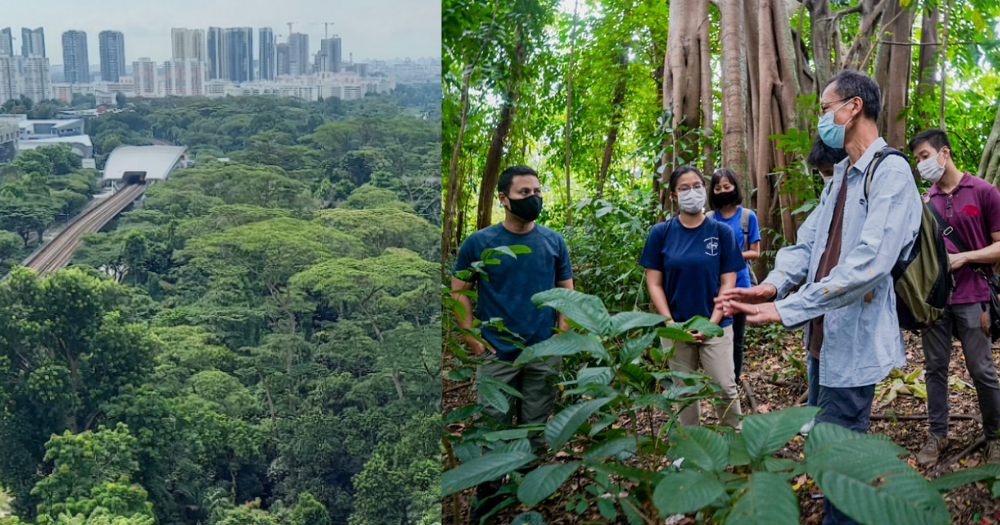Follow us on Telegram for the latest updates: https://t.me/mothershipsg
Minister for National Development Desmond Lee made a visit to the Dover forest with members of the nature community last evening (Jan. 27).
The area, also known as the Ulu Pandan estate, has been designated for residential development according to the Urban Redevelopment Authority's (URA) masterplan.
After the environmental baseline study was published for public feedback, many Singaporeans have voiced out concerns over the development of this 33-hectare forest which is home to a variety of flora and fauna.
Nature Society Singapore proposed for the forest to be developed as a nature-public park instead, and urged the government to consider alternative sites.
Desmond Lee visits Dover forest
On Jan. 27, Lee visited the forest with the National Parks Board (NParks) officers and some members of the nature community.

President of Nature Society (Singapore), Shawn Lum, and co-founder of Singapore Youth Voices for Biodiversity (SYVB), Karl Png, were present too.

Lee said in his Facebook post that the environmental baseline study was conducted and nature groups were consulted on the findings subsequently. The study was then made public to seek public views.
Lee said that the Housing and Development Board (HDB) has since received many pieces of feedback and suggestions and he said more views and ideas on the site are welcomed.
"We will study all the feedback received in detail, as we consider possible plans for the site."

Not set in stone yet
Lee said that it is important to ensure that decisions made on development today should take the needs of both current and future generations into account.
"Today, it is our turn to carry this responsibility of stewardship. This requires us to meet the needs of Singaporeans today, whilst in turn also safeguarding land for future generations"
He added that some plots of lands that were designated for other uses in the past have been protected and enhanced to become ecological important sites.
One example is the Mandai Mangrove and Mudflat which had been planned for factories but was kept as a Nature Park instead after careful biodiversity surveys and ecological modelling showed that it has significant ecological value.
Other nature parks used to be potential housing sites too.
"Green spaces such as Thomson Nature Park, Dairy Farm Nature Park, Rifle Range Nature Park and Khatib Bongsu were meant for housing, but we have kept them as green buffers to protect our Nature Reserves."
Housing needs and conserving forests are both important issues
Lee also highlighted that some plots of cleared land set aside by earlier generations have to be developed to meet the needs of the current generation.
However, for development near areas of significant biodiversity, the government will proceed with care, Lee said.
This includes conducting an environmental study with an in-depth consultation with technical agencies and other stakeholders such as the nature community and the public.
"As far as possible, we seek to preserve and integrate natural elements within developments, to facilitate ecological connectivity."
For the Ulu Pandan area, there is a need to balance the need to conserve green spaces and Singaporeans' housing needs.
"These are both important needs, and we should not rush into a decision," Lee said.
Lee also added that more detailed plans and ideas will be shared after studying the feedback gathered and consulting the community.
You can read the full post here:
Top image via Sydney Cheong and Desmond Lee/Facebook
If you like what you read, follow us on Facebook, Instagram, Twitter and Telegram to get the latest updates.

